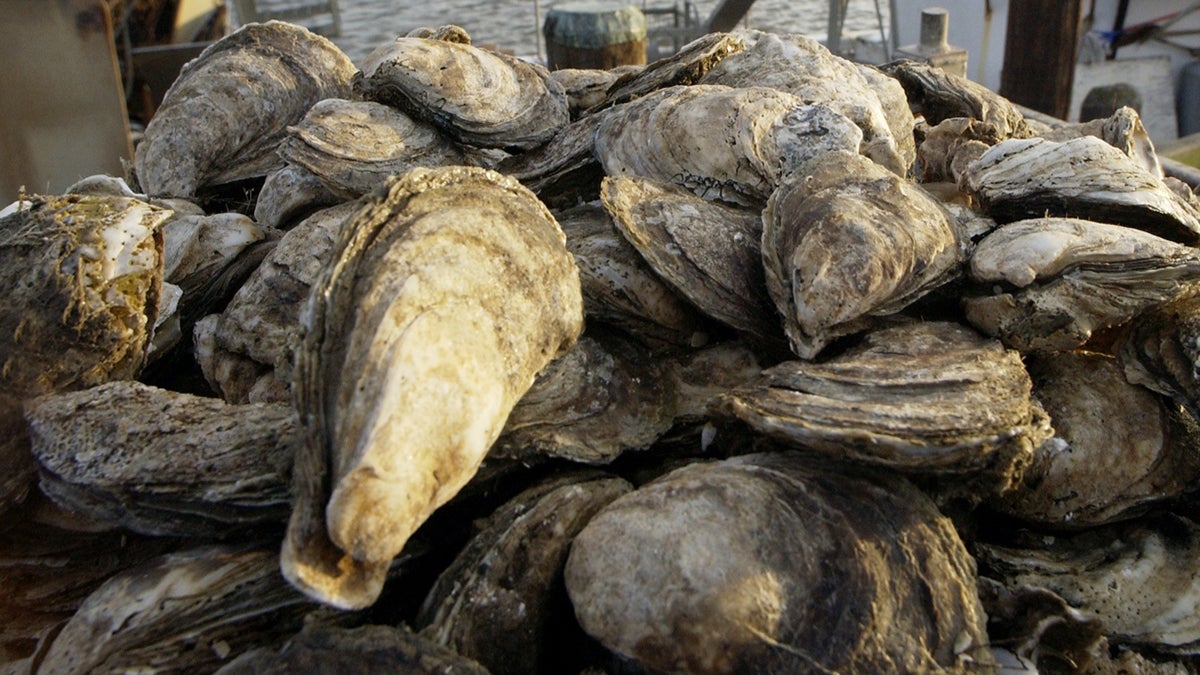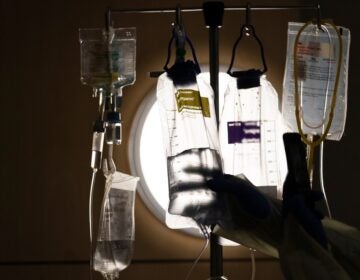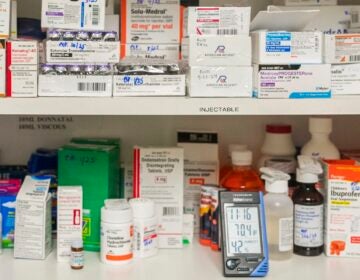Deadly bacteria on the rise in the Delaware Bay — and climate change is the likely culprit
A study from researchers at Cooper University Hospital shows an uptick in infections due to Vibrio vulnificus in the Delaware Bay.

Delaware Bay oysters (Mary Godleski/AP Photo)
Katherine Doktor, an infectious disease doctor at Cooper University Hospital in Camden, usually treats patients for conditions like sexually transmitted diseases, pneumonia, and other fairly common infections.
So in 2017 when she and her colleagues treated a patient for Vibrio vulnificus, a deadly bacterium endemic to the southeastern United States, they were a little surprised.
“We were like, ‘Wow, this is interesting, we haven’t seen this in a while,’” Doktor said.
In fact, they had only seen one case in the preceding eight years involving the bacterium, which can lead to organ failure and septic shock in those with other chronic conditions.
But after the first case in 2017, they saw four more over the next two years.
“As the second and third case came, it was striking,” she said. “When we had two additional cases in 2018, that’s when the alarm bells went off.”
The bacteria can enter the body by eating raw and undercooked seafood — particularly oysters — or through a cut in the skin that is exposed to water where the bacteria live. Four of the five patients had been catching, cleaning, or eating crabs in the Delaware Bay before they got sick.
Otherwise healthy people can be treated easily with antibiotics. But those with other health conditions, such as liver disease or diabetes, are at risk for developing serious complications.
Doktor and her colleagues compiled their experiences in a case series published Monday in the Annals of Internal Medicine to put other doctors in the region on alert.
Rising temperatures leading to a rise in bacteria
Vibrio vulnificus likes warm, brackish water, which means historically it wasn’t found in the Delaware Bay because it was too cold. It preferred the consistently warmer temperatures of the southeastern coast and even the Chesapeake Bay.
Rising global temperatures have changed that.
Rita Colwell, a professor at the University of Maryland and Johns Hopkins University Bloomberg School of Public Health, has studied Vibrio vulnificus for nearly 50 years.
In a paper published in 2016, she and her colleagues found an association between rising ocean temperatures and increases in Vibrio vulnificus infections.
“Clearly they respond to temperature,” Colwell said.
She said even in the Chesapeake, it was rare to see cases of Vibrio vulnificus until the last 40 years or so. Before that, scientists would see a case maybe once a decade.
Now, while still very rare, infections happen more regularly, and like the cases in the Delaware Bay, Colwell said that is due to rising temperatures.
“The correlation with warming temperatures and climate change is, I think, a very rational, logical, and legitimate conclusion to be drawn,” she said.
Serious complications for those with other health conditions
Three of the five patients Doktor and her colleagues treated had hepatitis. One had Parkinson’s disease. The other had diabetes and developed a serious complication called necrotizing fasciitis, an infection that kills human tissue.
One of the five patients, who also had untreated hepatitis C, died.
“We thought it would be wise to alert other clinicians that we are seeing an uptick in cases,” she said, “so that they’re aware that if somebody comes in with a break in the skin that appears infected that is rapidly progressing, that they consider Vibrio in their differential [diagnosis].”
For patients who test positive for the infection, the first line of treatment is the removal of any infected and dead tissue in the wound and administration of antibiotics.
“People with risk factors [like diabetes, liver disease, or immune suppression] Vibrio vulnificus should be aware that if they have any breaks in the skin or wounds that start to look bad rapidly or they develop fevers, they should seek medical attention,” Doktor said.
Michael Globetti, a spokesman for Delaware’s Department of Natural Resources and Environmental Control, said the Department’s Shellfish Program Manager, Michael Bott, confirmed that the state of Delaware has never had a recorded case of Vibrio vulnificus attributed to bivalve shellfish harvested from Delaware waters, including Delaware’s side of the Bay.
“Also, Delaware does not allow commercial harvest of oysters during the months of June, July and August from the Delaware Bay,” Globetti said in an email, “when the risk of Vibrio vulnificus infection is considered to be at its highest.”
WHYY is your source for fact-based, in-depth journalism and information. As a nonprofit organization, we rely on financial support from readers like you. Please give today.





